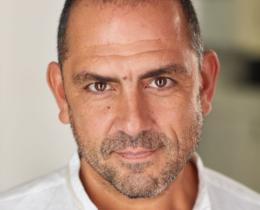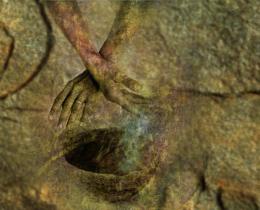Ho’oponopono is a powerfully transformative spiritual practice that uses loving attention to help us erase harmful memory patterns that are held in our unconscious mind.
In Hawaiian, Ho‘o is causative and can be thought of as “to make,” and “pono” (which is doubled, for emphasis), means “rightness,” or “true condition of nature.” Ho‘oponopono, then, restores problems not only to pono (rightness), but to ponopono (to make amends to correct). In other words, we use Ho‘oponopono to make right, more right—as we become right with ourselves, we become right with God.
When we practice Ho‘oponopono, our conscious mind directs loving intentions (just like a parent would) towards unhealthy memory patterns that are held in the unconscious mind (the inner child). To do this, we use four phrases: “I love you,” “I’m sorry,” “Please forgive me,” and “Thank you.”
If we could see ourselves as we truly are, we would come to the realization that we are actually God-like beings who already live in heaven. So, in doing Ho‘oponopono, we extend love to ourselves in order create the circumstances needed to bring about this divine realization.
Ho‘oponopono follows what I call the “down-to-go-up” paradigm of Shamanism—we find our way “up” to God by going “down” into ourselves—this is how we invite God to come to us. In other words, by filling ourselves with love, we are transformed into beings that are in sympathetic resonance with the love of the Divine. Heaven is right here because we create it with our minds, and Heaven then obliges us by making it so!
There is a Hawaiian proverb that mirrors this process: E iho ana ‘o luna, E pi’i ana ‘o lalo, which means, “That which is above shall come down, that which is below shall rise up.”
The four phrases of Ho‘oponopono
Most entrenched patterns that inhibit our lives and well-being originate from childhood wounding, and in Ho’oponopono you will speak the four phrases in order to communicate with your “little one” who may have learned and memorized something mistaken about themselves that has subsequently obscured their wholeness and their inherent divine nature. With sincerity and persistence, we use the four phrases to guide that child to a different understanding about themselves.
“I love you.”
We begin Ho‘oponopono with “I love you,” because whatever problem we are addressing came about because love was withheld in some way. “I love you” is how we start to fill that void inside us. It’s an active way of saying, “Despite the love that you didn’t receive, however you have been treated, or whatever you think yourself to be, I am here now, and I love you.”
The love that we extend to ourselves mirrors the Divine Love that practicing Ho‘oponopono will attract to us.
“I’m sorry.”
When the Hawaiians of old did Ho‘oponopono, an extremely important initial step of the process was to formally name the problem to be addressed—“I’m sorry” is a way of saying, “I see you. I see your suffering. I see your pain. I see this problem as it is, and I am so sorry that it is affecting you this way.”
To have our hardships named is to hold them with understanding and compassion, which is a vital step toward healing them.
In Ho‘oponopono, we say “I’m sorry,” in order to get real with ourselves. “I’m sorry,” helps us sit squarely in our pain, because by naming it we begin the process of losing our identification with it.
“Please forgive me.”
Forgiveness, in Ho‘oponopono, is the total release and complete removal of any negative memory pattern that is anything other than our god-self; it erases any false imprints that obscure our divinity, so that the only thing that remains is divinity.
Asking the inner child for forgiveness is a way of saying, “While others may have wronged you, or you have wronged yourself, I allowed it or I was unaware of it, and I ask you to please forgive me for this.”
In Ho‘oponopono, we say “Please forgive me” in order to take responsibility for any wrongdoing (ours and others), to make a new commitment to the child, and to promise to make amends in the future.
“Thank you.”
We say “Thank you” to the child to express our gratitude to it. You might also think of “Thank you” as expressing a sense of completion to the Ho‘oponopono process that is something like, “Amen,” “So it is,” or “It is done.”
In Ho‘oponopono, we say “thank you” to offer gratitude for past mistakes and for the allowance of new blessings, and to affirm that the work is complete.
Ho‘oponopono individual practice
Close your eyes, and allow your consciousness and attention to go inward.
Breathe.
Imagine that you are being held in the most loving, kind, and nurturing energy of a perfect Mother’s love. Allow yourself to receive her warmth and tenderness. Imagine that it is her love that emanates from your hands on your body.
The inner child is the aspect of you that is holding the problem or struggle that you wish to address. At one time, probably very long ago, you adapted to your environment by holding something in your body that shouldn’t be there, or by constricting against yourself, or by sending parts of yourself away. We are going to begin the process of making all of this right again.
Breathe.
Now, speak directly to the child and the problem that they hold, and tell them, “I love you.” With as much sincerity and earnestness as you can muster tell them again, “I love you. I. Love. You.”
Breathe.
And now, tell this part of you, “I’m sorry. I am so sorry.” Tell them, “I see this problem clearly, I see your suffering, and I’m sorry that you were treated in this way.
Breathe.
And now, ask this child, “Please forgive me.” Say to this part of you, “Please forgive me for not being there for you, or for not knowing how to protect you. In any way in which I have not done right by you, please forgive me.”
Breathe.
Tell them one more time, “I love you.” Say to them “I’m sorry,” and ask them again, “Please forgive me.”
Breathe.
And now, tell the child, “Thank you.” Say to this part of you, “Thank you for always doing your best, and thank you for trying so hard.
Breathe.
Lovingly speak the four phrases a few more times to your child-self, to that tender place within you that holds the problem. Soon, you’ll begin to notice that there is a divine presence holding you—an energy, a grace, or a healing light is starting to surround you.
Feel into these healing energies around you. Open yourself to them and let your child feel them too. Something outside of you is offering you the same loving energy that you have been offering your child. Feel this love as a celestial light that is swirling around you.
Take it in. Breathe it in and receive its radiant luminescence, and hear it convey to you that it loves you. Feel it tell you that it is so sorry. Know that it is asking for your forgiveness. And, sense that it is offering its thanks to you.
While it is certainly beneficial to present Ho’oponopono as an individual spiritual practice, its real power and the ultimate benefit of what Ho‘oponopono can accomplish for you comes not by practicing it, but by living it.
This means that “I love you,” “I’m sorry,” “Please forgive me,” and “Thank you,” inform and guide every step you take, every action you make, and every person that you chose to invite into your life.




